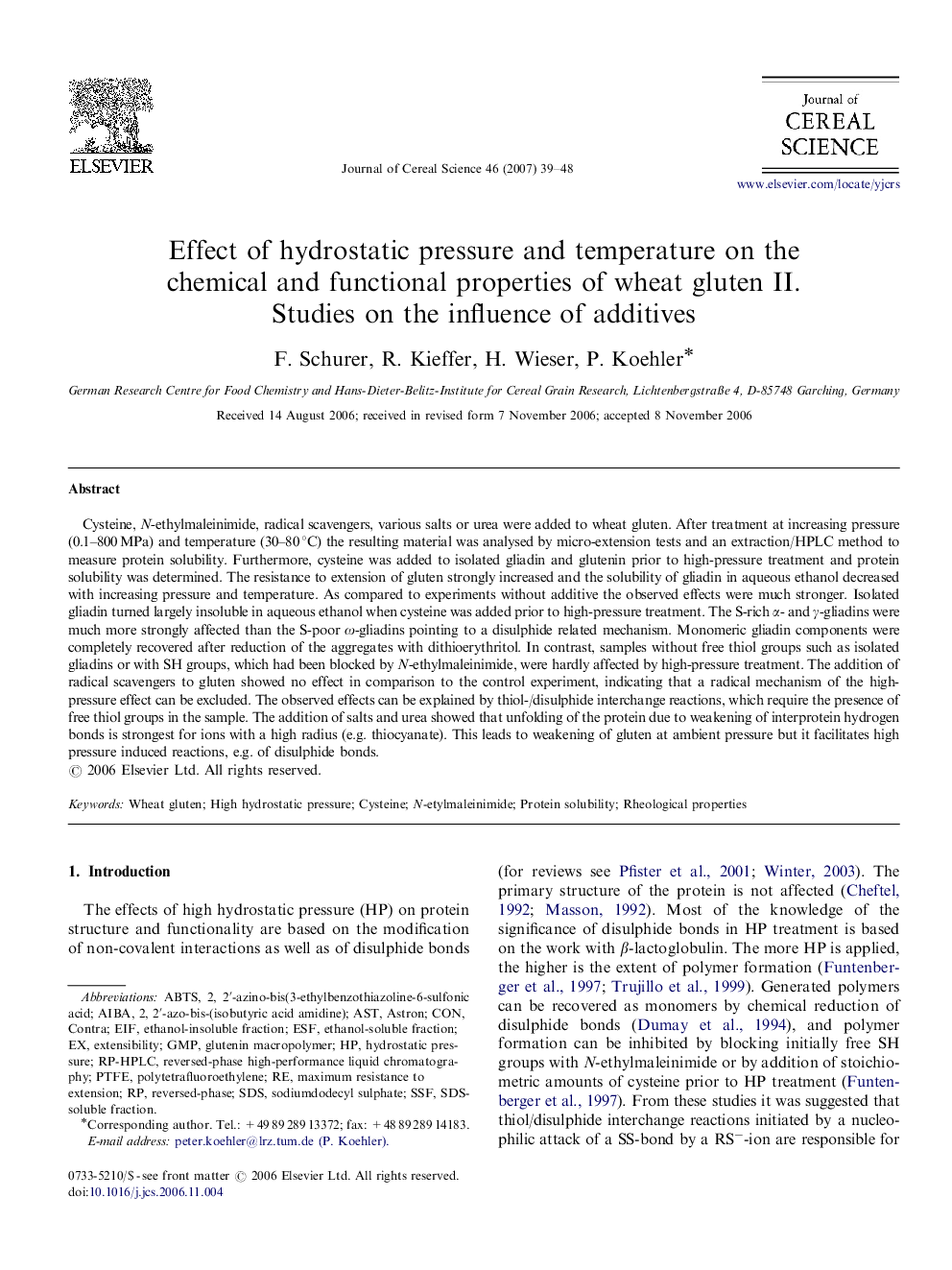| کد مقاله | کد نشریه | سال انتشار | مقاله انگلیسی | نسخه تمام متن |
|---|---|---|---|---|
| 4516508 | 1322359 | 2007 | 10 صفحه PDF | دانلود رایگان |

Cysteine, N-ethylmaleinimide, radical scavengers, various salts or urea were added to wheat gluten. After treatment at increasing pressure (0.1–800 MPa) and temperature (30–80 °C) the resulting material was analysed by micro-extension tests and an extraction/HPLC method to measure protein solubility. Furthermore, cysteine was added to isolated gliadin and glutenin prior to high-pressure treatment and protein solubility was determined. The resistance to extension of gluten strongly increased and the solubility of gliadin in aqueous ethanol decreased with increasing pressure and temperature. As compared to experiments without additive the observed effects were much stronger. Isolated gliadin turned largely insoluble in aqueous ethanol when cysteine was added prior to high-pressure treatment. The S-rich α- and γ-gliadins were much more strongly affected than the S-poor ω-gliadins pointing to a disulphide related mechanism. Monomeric gliadin components were completely recovered after reduction of the aggregates with dithioerythritol. In contrast, samples without free thiol groups such as isolated gliadins or with SH groups, which had been blocked by N-ethylmaleinimide, were hardly affected by high-pressure treatment. The addition of radical scavengers to gluten showed no effect in comparison to the control experiment, indicating that a radical mechanism of the high-pressure effect can be excluded. The observed effects can be explained by thiol-/disulphide interchange reactions, which require the presence of free thiol groups in the sample. The addition of salts and urea showed that unfolding of the protein due to weakening of interprotein hydrogen bonds is strongest for ions with a high radius (e.g. thiocyanate). This leads to weakening of gluten at ambient pressure but it facilitates high pressure induced reactions, e.g. of disulphide bonds.
Journal: Journal of Cereal Science - Volume 46, Issue 1, July 2007, Pages 39–48